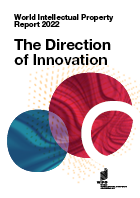Resilience in Face of the COVID-19 Crisis
IP offices and academic economists came together to study how the global innovation system responded to the coronavirus (COVID-19) pandemic. The collaboration resulted in an open access publication that illustrates how the global innovation system is resilient and how its innovation stakeholders were able to creatively respond to the shock.

On March 2020, the World Health Organization declared the coronavirus COVID-19 a global pandemic. This global health crisis not only resulted in mass death toll worldwide, it also precipitated a global economic shock.
How has the global innovation system responded?
Some of the main findings from the publication include:
1. COVID-19 had significant impact on the global intellectual property (IP) filings in the first two years of the pandemic. However, this effect is less severe than the dotcom crash, or the Great Recession. It was also short-lived, with varying impact experienced across different regions of the world and sectors.
Notes: International patent applications refer to applications filed in the international phase of the Patent Cooperation Treaty (PCT). The figures presented are monthly 3-month moving average growth rates relative the same period in the previous year. Patent counts are based on the international filing date of PCT applications, either at national/regional patent offices or directly at WIPO. Source: WIPO IP Statistics Database
2. Micro, small and medium-sized entrepreneurs suffered the hardest hit from the pandemic. Nevertheless, the rapid adoption of digital technologies created opportunities for many entrepreneurs. The number of global trademark filings surged after the first year into the pandemic. Similarly, there was a surge in new business activities in some parts of the world.
3. Evidence for the US suggests that women researchers as well as researchers with primary care responsibilities were the most heavily affected by the pandemic. Their scientific career opportunities may have been permanently altered. Policies at research institutions that aimed at curtailing or softening the COVID-19 disruptions seem to have fallen short.
4. Policy support played an instrumental role in the resilience of our global innovation system. It also played an important role in spurring the ingenuity that contributed to the system’s response in addressing the pandemic.
One of the main takeaways from the book is that the ingenuity of the innovation system should not be taken for granted. Policymakers have to consider how the policies they enact in response to shocks, such as this pandemic, would impact the long-term innovation trajectory. For example, policies that were used to cushion the shock resulting from the pandemic may have inadvertently resulted in an unsustainable degree of innovative exuberance.
For the innovation systems to deliver powerful technological solutions to societal challenges, innovation policies should take a longer-term, proactive perspective, supporting new ideas which have the potential to become breakthroughs in their early high-risk phases. Continuous investments in scientific research remain crucial in generating the knowledge underlying technological breakthroughs.
Want to know more about this straight from the authors? Listen to their participation in the podcast: "VoxTalks Economics".
Related Stories

How Policy may Redirect Innovation
Government policies can affect the rate and, to some extent, the direction of innovative activities. Some of these policies, such as R&D tax incentives, protection of IP rights, encourage innovation.
Related resources

Resilience and Ingenuity: Global Innovation Responses to COVID-19
The COVID-19 pandemic has profoundly affected the ecosystems that spur innovation and creativity around the world. This CEPR Press Book untangles how the Covid shock shaped the innovation landscape of the world’s major economies, and how scientists, entrepreneurs and creative professionals responded to the crisis.

The Direction of Innovation
The 2022 edition of the World Intellectual Property Report examines how crises such as pandemics and wars can influence the evolution of innovation by looking at historical scientific and technological advances from vaccine development during the COVID-19 outbreak to the rise and prevalence of digital technologies of today.